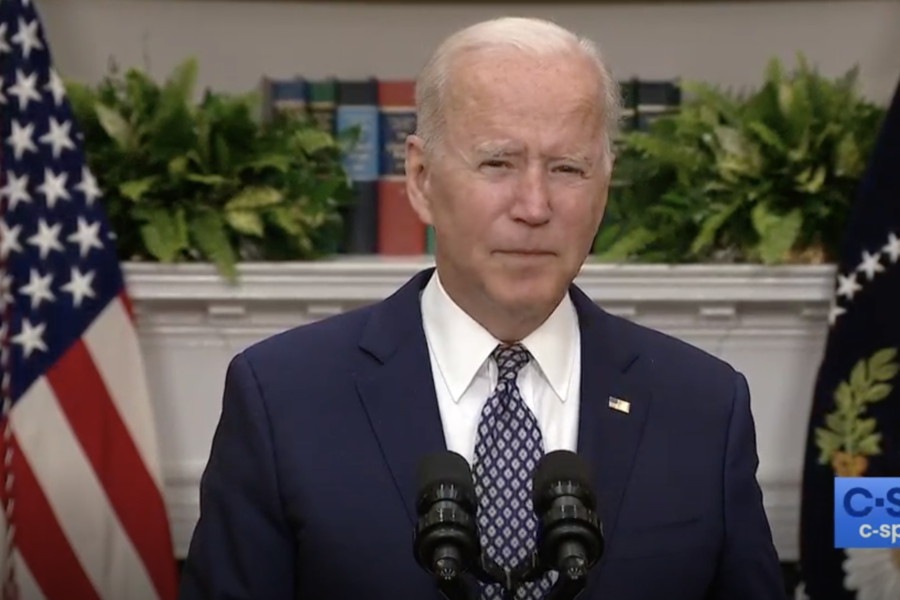With a rapidly approaching deadline to withdraw all U.S. troops from Afghanistan, President Joe Biden said the evacuation mission is on pace to finish by Aug. 31, though he has asked the Pentagon for contingency plans should that change.
U.S. and coalition efforts have evacuated approximately 70,700 people in 10 days as the Taliban has taken Kabul, with another 5,000 evacuated in the weeks prior to Aug. 14. There’s untold thousands more U.S. citizens, Afghan special immigrant visa applicants, and other vulnerable people awaiting a plane to leave.
Biden said the “sooner we can finish, the better. Each day of operations brings added risk to our troops.”
In just a 12-hour span, 19 U.S. military flights, including 18 C-17s and one C-130, flew out 6,400 evacuees. Earlier in the day, a Pentagon briefing outlined another 24-hour span, ending early Aug. 24, during which U.S. Air Force airlifters had dramatically increased their operations, again. In that timespan, 32 C-17s and five C-130s departed Kabul with 12,700 evacuees—well more than the 5,000-9,000 pace the Pentagon had predicted days before. Including charter flights and others, more than 21,000 people departed Kabul during that time period.
The bulk of the evacuees have been Afghans. The Pentagon said in a statement that approximately 4,000 U.S. passport holders and their families have been evacuated since the effort began. The State Department is expected to provide an update Aug. 25 with more detail on the number of Americans remaining.
Maj. Gen. William D. “Hank” Taylor, the Joint Staff’s deputy director for regional operations, said aircraft are departing the airport at a pace of one every 45 minutes, bringing people “out of harm’s way, … and on their journey to a better life.”
“We continue to make progress every day in getting Americans, as well as [special immigrant visa] applicants and vulnerable Afghans out, … and the vast, vast majority of these individuals are Afghans,” Pentagon spokesman John F. Kirby said in a briefing. “We are remaining committed to getting any and all Americans, that want to leave, to get them out.”
U.S. forces will need to pack up to leave in the days running up to the deadline, which would slow down and eventually halt evacuation operations. The Pentagon said Aug. 24 “several hundred” troops left Afghanistan. These included headquarters staff, maintenance, and “other enabling functions that were scheduled to leave and whose mission at the airport was complete. Their departure represents prudent and efficient force management. It will have no impact on the mission at hand.”
The Taliban said Aug. 24 it would pressure Afghans to not travel to the airport, in an effort to prevent educated and skilled people from leaving the country as the group tries to build its government, Al Jazeera reported.
Outside of Afghanistan, airlifts also continued, with private Civil Reserve Air Fleet aircraft taking passengers from interim staging bases such as Al Udeid Air Base, Qatar, to follow-on facilities and ultimately to the United States. The sheer amount of people at these bases, especially in Qatar, has caused sanitation and other humanitarian problems.
“We’ll be the first to admit that there were conditions at Al Udeid [that] could have been better,” Kirby said. “They are improving now. I’m not going to stand up here and tell you that they’re perfect because they’re not. Because evacuees continue to flow into Qatar and there’s a lot on the ground right now.”
Within the same 24-hour period, four flights landed at Washington-Dulles International Airport with more than 1,000 passengers, who will go on to the four military bases identified to serve as temporary homes for the evacuees.
